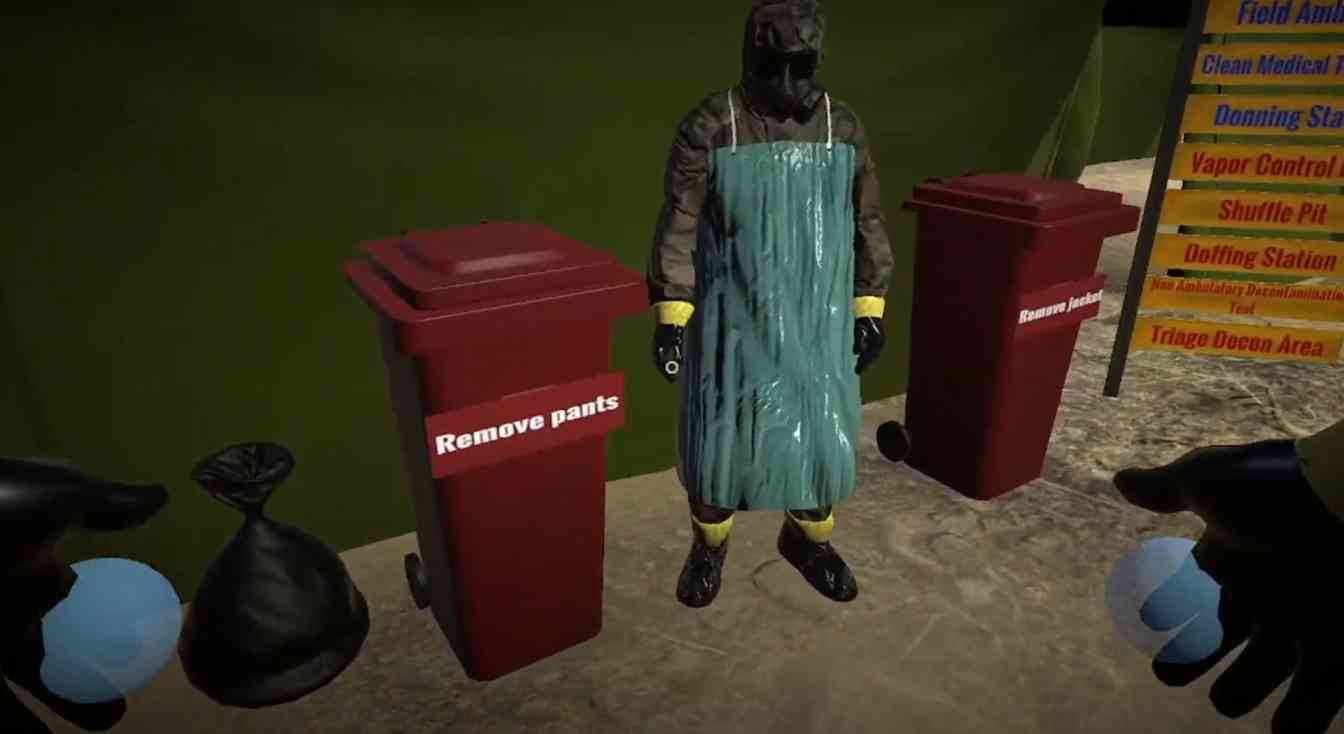
The Geneva Foundation, a leading military medicine non-profit, collaborated with US Army Madigan Medical Center and Exonicus to produce nine unique chemical, biological, radiological, nuclear, and explosive (CBRNE) virtual reality scenarios. Coined the “Ready Medic One” project, it promises to revolutionize CBRNE preparation by making it widely available for minimal cost.
Hospitals and medical providers are not equipped to handle CBRNE scenarios. By one count, only 21% of hospitals had a formal response plan for radiation incidents and only 62% had chemical decontamination abilities. With little infrastructural investment in CBRNE preparedness, training becomes even more important. However, traditional medical simulation training is expensive and time-intensive. The rarity of CBRNE events compounds the training dilemma. Even if there is access to traditional medical simulation training, it likely will not be for CBRNE events.
Thus, the problem is to create a high-fidelity simulation at low-cost that can effectively simulate and train medical physicians to make decisions quickly and correctly in a CBRNE scenario. Luckily, Exonicus Inc. has the innovative solution to this problem.
Virtual reality has been proven by extensive research to be an effective medical education modality that enables physicians to learn and maintain technical and interpersonal skills. The idea is to apply this cutting-edge technology to the CBRNE events. Moreover, the solution should be able to integrate with other medical simulation tools, such as the University of Washington’s Advanced Modular Manikin to enable future innovations. Using a headset and a computer for a setup cost of less than $2000, the solution would be accessible even in offline environments.
The team committed to developing nine scenarios.
While these nine CBRNE events span a breadth of medical specialties, they share a few features in common. They are hard to train for and represent some of the most catastrophic and traumatic events in combat. Considering the high-complexity of medical simulation for these events, mixed virtual reality is perfectly suited to meet the need for sophisticated simulations.
Exonicus was the natural choice for this project for a variety of reasons. The team has the software development expertise, the medical knowledge, and the history of work to deliver high-fidelity scenarios. Having conducted several research studies proving the efficacy of virtual reality as a medical education modality, the Latvian team was well-positioned to continue its track record as a trailblazer in this field.
Most importantly, Exonicus boasts the organizational maturity to tackle complex multi-stakeholder coordination. In this project, Exonicus collaborates with several major organizations on development and project management, in addition to soliciting the opinions of dozens of experts. The team synchronizes with a BioGears team to develop the powerful physiology engine facilitating life-like responses to medical interventions. At the same time, Exonicus Inc. works to align with the University of Washington’s Advanced Modular Manikin program for future collaborations. To add even more complexity, Exonicus Inc. works with the Geneva Foundation on program management and Madigan Army Medical Center on training curricula for CBRNE incidents.
This is not a complete list of the collaborators for this project, but the breadth of contributors is a testament to Exonicus’s commitment to finding the best talent, wherever that talent exists. As an international and cross-disciplinary project, the CBRNE scenario development is one of the most difficult management problems yet. However, Exonicus Inc. maintains its disruptive startup attitude while cultivating organizational abilities of established companies, making it a trustworthy partner.
The world watched in horror as Russian troops took over the Zaporizhzhia nuclear power plant. Russian soldiers entrenched themselves in Europe’s largest nuclear facility, thus commanding the world’s attention in an incredibly irresponsible game of nuclear brinkmanship. Suddenly, a CBRNE catastrophe is a much more real possibility. When your adversary has no respect for risk mitigation or human life, you must respond by preparing for disaster. Luckily, there is a way to prepare.
Investing in virtual reality medical simulation for CBRNE events could save lives. It is more cost-effective than traditional medical simulation, and in certain important ways, it is more realistic than some CBRNE medical simulation techniques. Developing and deploying this solution at scale will ensure that both civilian and military personnel are well-equipped to handle cataclysmic CBRNE situations.